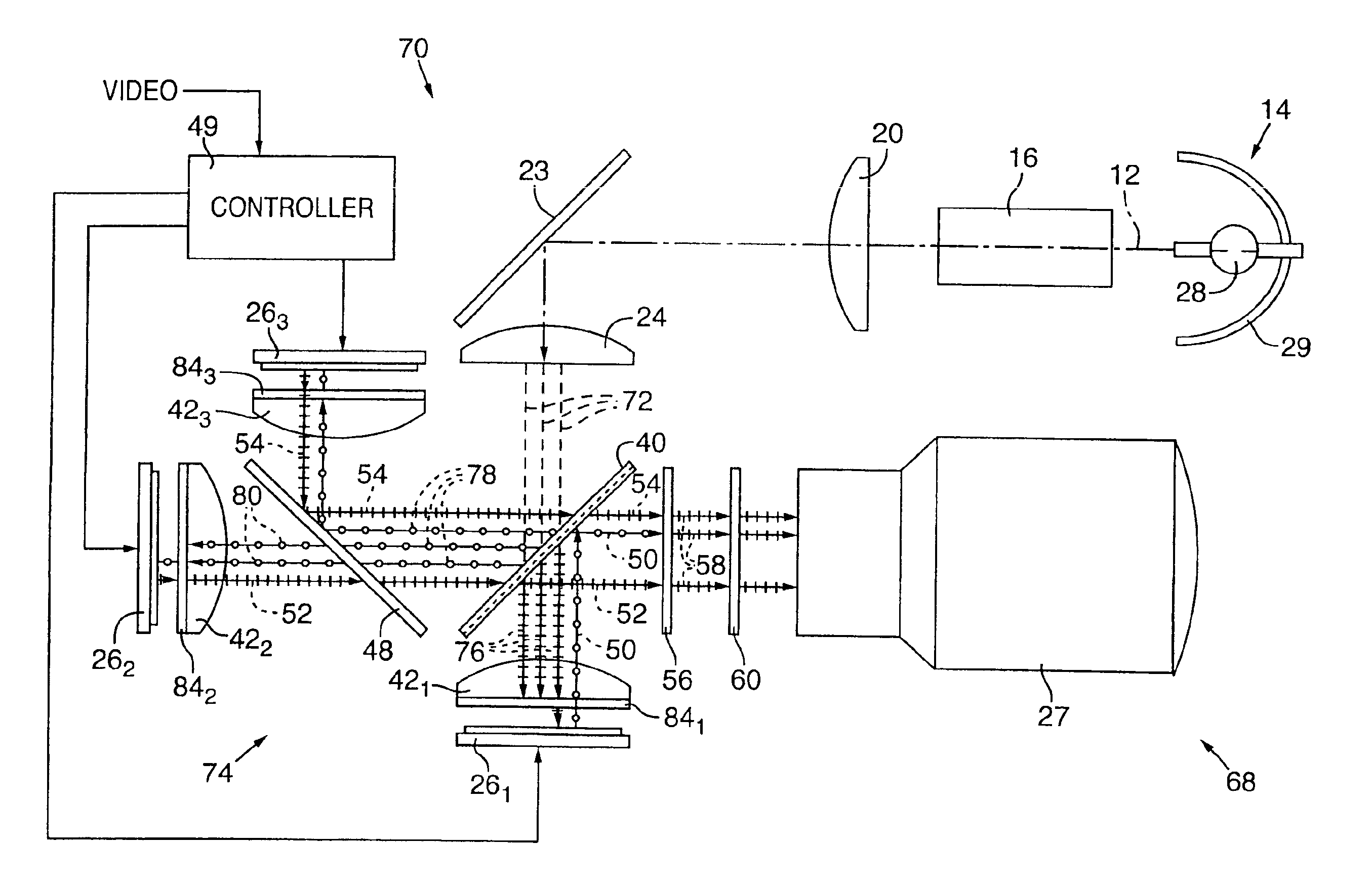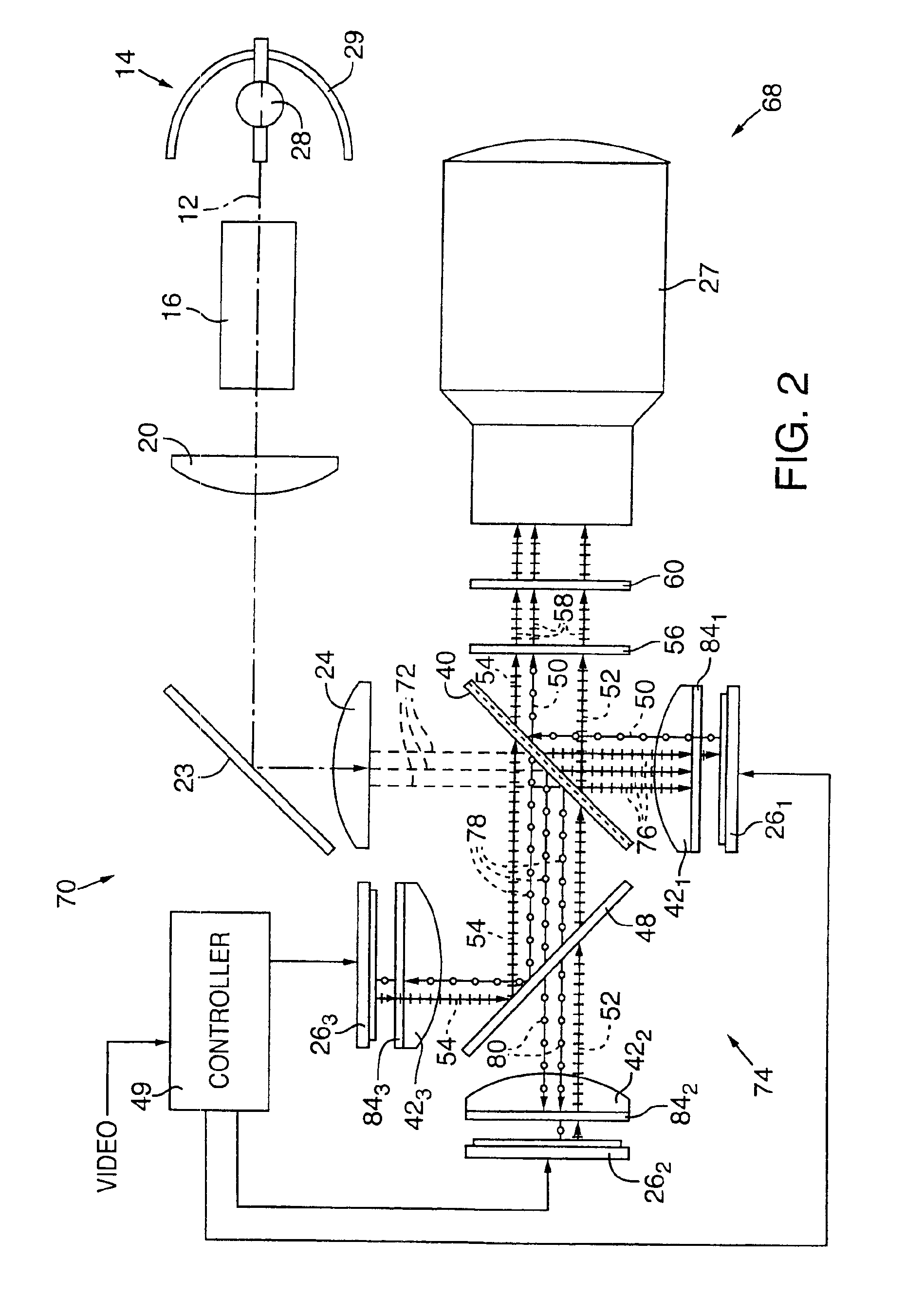Color video projection system employing reflective liquid crystal display devices
a liquid crystal display and video projection technology, applied in the direction of picture reproducers using projection devices, non-linear optics, instruments, etc., can solve the problems of high component cost, projection lens requires a long back working distance, stress birefringence, etc., to achieve less cost, less weight, and compact
- Summary
- Abstract
- Description
- Claims
- Application Information
AI Technical Summary
Benefits of technology
Problems solved by technology
Method used
Image
Examples
first embodiment
[0026]FIG. 1 is a simplified pictorial plan view of a multimedia projector showing a projector optical system of this invention.
second embodiment
[0027]FIG. 2 is a simplified pictorial plan view of a multimedia projector showing a projector optical system of this invention.
DETAILED DESCRIPTION OF PREFERRED EMBODIMENTS
[0028]FIG. 1 shows an image projector 8 having an optical system 10 designed in accordance with a first embodiment of this invention and enclosed in and supported by a housing (not shown). Optical system 10 is constructed along an optical axis 12 and includes a light source 14; a light pipe optical integrator 16 having an inlet end 17 and an outlet end 18; a first positive lens 20; a polarization conversion prism assembly 22; a fold mirror 23; a second positive lens 24; a three-path reflective LCD assembly 25 that includes first, second, and third liquid crystal displays (“LCDs”) 261, 262, and 263 (collectively “LCDs 26”); and a telecentric-type projection lens 27. LCDs 26 are preferably about 15 millimeter (0.6 inch), reflective LCOS light valves employing twisted neumatic liquid crystal material, which is optic...
PUM
| Property | Measurement | Unit |
|---|---|---|
| aspect ratios | aaaaa | aaaaa |
| aspect ratios | aaaaa | aaaaa |
| aspect ratios | aaaaa | aaaaa |
Abstract
Description
Claims
Application Information
 Login to View More
Login to View More - R&D
- Intellectual Property
- Life Sciences
- Materials
- Tech Scout
- Unparalleled Data Quality
- Higher Quality Content
- 60% Fewer Hallucinations
Browse by: Latest US Patents, China's latest patents, Technical Efficacy Thesaurus, Application Domain, Technology Topic, Popular Technical Reports.
© 2025 PatSnap. All rights reserved.Legal|Privacy policy|Modern Slavery Act Transparency Statement|Sitemap|About US| Contact US: help@patsnap.com



